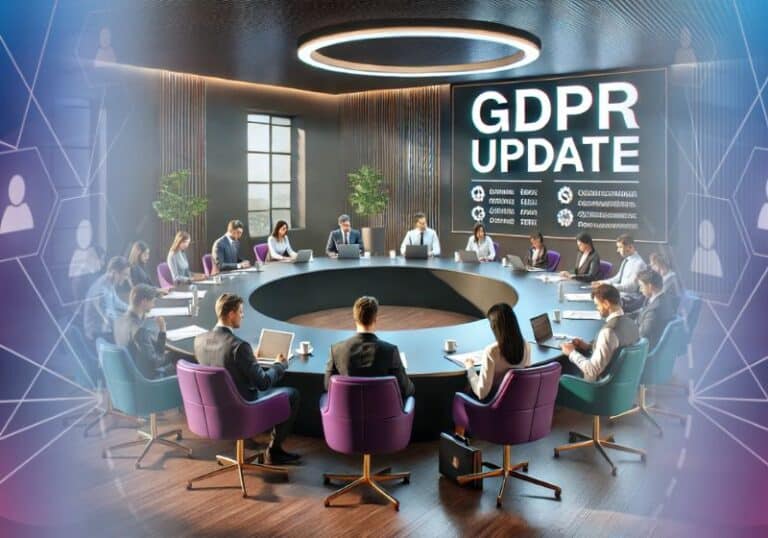Internal Employment Investigations

Internal investigations are becoming increasingly common in the workplace, particularly as employee awareness and regulatory expectations continue to grow. In this edition of Ask the Expert, we look at what employers need to know when conducting workplace investigations—from first steps to final outcomes—and how to approach this sensitive process with professionalism, fairness, and care.
Angela sat down with Ella and this is what she had to say:
Internal investigations seem to be on the rise. What’s driving this increase?
Ella: Absolutely, Angela. We’ve seen a noticeable uptick across various sectors. This is largely due to greater employee awareness and willingness to speak up—think about the impact of movements like #MeToo, growing regulatory scrutiny, and high-profile cases in the media. On top of that, the shift to remote work during the pandemic led to more complaints being submitted in writing, which naturally feeds into more formal investigations.
When a complaint arises, how should an employer decide what kind of investigation is needed?
Ella: The first step is acknowledging the issue and then assessing its seriousness. Some matters may be resolved informally—say, through mediation—while others demand a structured, formal investigation. Internal policies around whistleblowing, harassment, and disciplinary actions can guide this decision. Importantly, employers need to balance the severity of the allegation with proportionality, consistency, and fairness.
What initial actions should employers take once a complaint is received?
Ella: Start by identifying everyone potentially involved, addressing any urgent safety risks, and considering whether temporary actions are needed—like suspension or role changes—while the investigation is underway. It’s also essential to preserve evidence early on and remind everyone involved about confidentiality. Coordination between HR, compliance, and legal teams is key, especially where regulatory or reputational risk is present.
So, who should lead the investigation?
Ella: The investigator must be neutral, credible, and ideally not directly involved with any of the parties. For sensitive cases, or where senior staff are implicated, bringing in an external investigator can help ensure impartiality. Experience matters, as does availability—this isn’t a side project. Also, think ahead: who’s handling appeals or disciplinary action later?
Once the investigator is appointed, how should the process be planned?
Ella: A clear investigation plan is vital. This includes defining the scope, setting timelines, and deciding whether a written report will be produced. The plan should cover interview logistics, document reviews, communication protocols, and any cross-border legal considerations. And since investigations can evolve, flexibility is key—review and adjust as new information comes to light.
And how does the actual investigation unfold?
Ella: Thoroughly but fairly. Confidentiality must be maintained wherever possible. Evidence should be gathered in compliance with data protection laws—think emails, mobile data, CCTV, etc. Interviews should be well-structured and culturally sensitive, with consistency in who conducts them. Remember, interviewees may have the right to be accompanied, and reasonable adjustments should be made where necessary.
Once the fact-finding is complete, what’s next?
Ella: The investigator compiles their findings—either in a written or oral report—clearly explaining the reasoning and evidence behind each conclusion. Depending on the scope, this might include recommendations or simply a summary of the facts. It’s important to document everything carefully, including any conflicting evidence, and to consult legal teams about what should be shared and with whom.
What happens after the investigation ends?
Ella: That depends on the outcome. Employers may move into formal disciplinary proceedings or take informal action. Some cases might require regulatory reporting, policy updates, or further training. Investigations also tend to uncover side issues that may need follow-up, so storing records securely and reflecting on lessons learned is essential for preventing future problems.
In my experience, if the investigation is flawed, the whole process risks falling apart. Would you agree?
Ella: Without question. A flawed investigation undermines everything that follows—be it a disciplinary, grievance outcome, or even legal defence. It can damage trust, expose the business to legal risk, and, most importantly, fail the people involved. That’s why it’s so important to get the foundations right: appoint the right investigator, follow a clear process, and document decisions properly. A well-run investigation doesn’t just protect the business—it upholds fairness and integrity in the workplace.
That’s incredibly helpful—thank you, Ella. It’s clear that conducting internal investigations requires not just thorough planning but also legal awareness, discretion, and compassion.
Ella: Absolutely. Getting it right helps organisations uphold standards, protect employees, and demonstrate accountability.
Final thoughts
Before we wrap up, what would be your parting words of wisdom for employers when it comes to handling internal investigations?
Ella: Treat every investigation as though it could be scrutinised by a tribunal, a regulator, or the court of public opinion. That doesn’t mean being fearful—it means being thorough, fair, and consistent. Keep an open mind, don’t rush to conclusions, and always remember you’re dealing with real people, often in difficult circumstances. A well-handled investigation not only resolves the issue at hand—it reinforces your organisation’s values and credibility.
Ella Crooks
Ella is one of our full-time HR Consultants, bringing valuable experience in recruitment and compliance. Known for her friendly and professional approach, she’s passionate about supporting clients and building lasting relationships.




